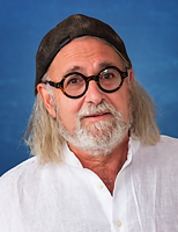Lag be-Omer, the 33rd day of the 49 days between the holidays of Passover and Shavuot, has many identities. In kabbalistic terms, the minor holiday begins as the celebration of the yahrtzeit of Rabbi Shimon Bar Yochai, the hero of the Zohar. The Talmud had told the tale of his flight from the Romans, hiding in a cave, located, variously, in Peki’in or Lod. That tale and others attested to a turbulent and romantic career for the 2nd century Tanna. His reappearance as the hero of the Zohar, a thousand years later, reinforced the strong shadow of his presence in the general imagination. Isaac Luria would journey from Tsfat to Meron to make a festive meal on Lag Be-Omer, to celebrate the yahrtzeit.
The Zohar described the death of Rabbi Shimon in its penultimate passages known as the Idrot. According to those accounts, Rabbi Shimon died in the throes of mystical ecstasy while envisioning the ultimate secrets of the structure of God. At the moment of his death, the disciples were surrounded on all sides by walls of fire. The practice of lighting bonfires on Lag Be-Omer, which has led to many abuses in the charedi community, probably comes from this association. Moreover, the tale of Rabbi Shimon’s emergence from hiding involved him seeing, like the Biblical Noah, a rainbow (Heb.- keshet). So bows and arrows became associated with the festive day.
Hence, Lag Be-Omer emerged to prominence in a certain historical nexus, the progression from the Zohar’s appearance in the 13th century to the fulfillment of its ideas in the Galilee of the 16th century. In 1272, Petachia of Regensburg, one of the epic Jewish travelers of the medieval period, reported that the Jews of the Galilee “pray for rain in the cave of Hillel and Shammai and in the study room of Shim’on Bar Yochai” on Mt. Meron, and that description
was certainly in hand when the Zohar recorded the inhabitants of Meron vying for the right to bury Rabbi Shimon there. The buildings over Rabbi Shimon’s grave at Meron were built by Rabbi Avraham Galante, a Zohar exegete and student of Rabbi Isaac Luria. Now Lag Be-Omer had, along with its story, a site, namely the slopes of Mt. Meron, where the central celebration takes place to this day.
In the non-kabbalistic world, Lag be-Omer was linked to a mysterious “plague among the students of Rabbi Akiva” alluded to in the later midrashic sources (Yevamot 62b). Was this a veiled references to martyrdom during the Jewish revolt? In any case, Rabbinic authorities prescribed a certain reticence during the Omer and a general ban on weddings. This impulse took on greater weight as the Church gained prominence and the season between Passover and Shavuot began to be shadowed by the Christian celebrations of Easter and Pentacost, a period when the local Christian clergy might fall back on some powerful sermons about the circumstances of Jesus’ death, leading to pogroms by the locals. So Jewish authorities in Ashkenaz counseled circumspection during this period, a reticence about celebrations that survives to this day, punctuated only by the Zionist holidays of Yom ha-Shoah, Yom ha- Zikharon and Yom ha-Atzmaut.
These overlapping identities held sway until the mid-20th century. American Judaism, in its excelsis, was fueled by the images Masada, Jewish militarism and Holocaust guilt. For example, the most popular volume in our Temple library was once called “Jews Fought Too” about American Jewish participation in World War II. In the course of this interest is what Max Nordau called “muscular Judaism,” American-style, Lag be-Omer was rebranded, becoming, like Chanukah, the holiday of Jewish resistance.
These identities may not be valid or historically accurate, but Isaac Luria still said of the Omer that the Torah states, “wheat portion for every head” (Heb. omer la-gilgolet, Exodus 16:16.). Whether or not, then, one observes customs of mourning during the Omer, one’s hair should run wild, and the screaming babies at Meron, waiting to get their first haircut, also have a part in the day. And I will have a little beard trim, and contemplate the ascension of Rabbi Shimon, as he left behind this world of dichotomies, dialectics and disunities in pursuit of the place where everything is One.


 Download PDF
Download PDF